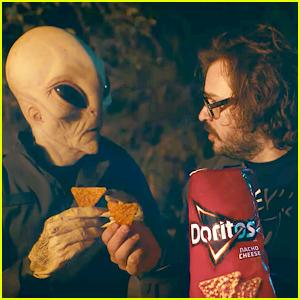In our recent article The Best Channels for Social Media Marketing in 2026, we explored some of the key current trends in social media marketing. One of these is UGC – User Generated Content. 79% of consumers are influenced by UGC when making purchasing decisions.
So in this article we explain more about UGC and share five ways to create the best User Generated Content for your business.
What is UGC?
UGC is content that is created by someone else rather than the brand itself. This could be an employee, customer, social media follower or any other kind of brand advocate.
The content can be in any form, including photos, videos, live streams, reviews, blogs or podcasts. It can appear either on your own website or social media channels, third-party websites such as YouTube or review sites, or social media channels and websites owned by your customers and followers.
UGC could be viewed as the 21st century version of word of mouth and creates a sense of community and loyalty amongst your customers and followers. It’s also very valuable in opening up conversations between your brand and its customers, enabling you to interact with them in a more meaningful way.
Five ways to create the best UGC for your business
There are many ways to generate UGC for your business but it can sometimes feel like an uphill struggle. Here are five suggestions on how to give your UGC a boost, along with examples of brands that have used them successfully.
-
Ask for it
Some brands regularly invite their followers to submit content. An example of this is Nike, which regularly puts calls out for UGC and reposts user content on its social accounts linked to trending hashtags such as #mercurial. The impact of this is not only an ongoing supply of authentic content – with customers being transformed into brand ambassadors – but also building a strong sense of community amongst followers and fans.
-
Run competitions
A competition is a great way to generate UGC. By offering some kind of prize or discount as an incentive for followers to get involved, you are likely to get greater volume and quality of UGC coming in. An example of this is Doritos’ #CrashtheSuperBowl contest. Customers are invited to create their own ad for Doritos and every year at least one of these is guaranteed to air during the Super Bowl. The winning 2025 entry was Abduction, which features an alien trying to steal a bag of Doritos.
-
Personalise the impact of your brand
If your business is about supplying any kind of product for personal use, then personalised UGC can be tremendously effective at increasing loyalty and engagement. For example, if you are in any home-related business such as decor, furnishings, kitchen equipment, showing examples of real customers using the product in their homes can have much more impact than ads or posts from your brand.
One example of this is Anthropologie’s #AnthroHome campaign. Anthropologie invites customers to share images and videos of their homes styled with Anthropologie products using the #AnthroHome hashtag. The UGC generated provides design inspiration and a sense of community amongst customers.
-
Engage the emotions
It’s important to understand that your UGC does not have to feature a hard sell for your brand. It can be just as effective if it evokes feelings or emotions that align with the way you want your brand to be perceived and the values you want to portray.
One of the key ways that UGC harnesses the power of emotions is when it is based on storytelling, which triggers emotional responses in the brain. If the UGC features a customer’s journey or shared experience this can create a strong sense of connection and help to develop deeper emotional links between the customer and the brand.
One example of this kind of UGC is Airbnb Community Stories, which encourages users to share their travel experiences and stories. This has proved to be a powerful way of building a sense of connection and trust amongst existing and potential customers, and making them feel that they are part of a community that values personal experiences.
-
Thanks for the memories
Another powerful use of UGC is to general nostalgia and happy memories amongst followers. Many brands already use social media trends such as #ThrowbackThursday (#TBT) to showcase throwback posts or to encourage users to share memories related to the brand.
But this can be taken one step further by running campaigns that encourage customers and followers to journey back to significant times in their own lives, then share UGC based on the nostalgia from those times. A memorable example of this was Spotify’s 2019 campaign based on the 1984 movie “The Never Ending Story” and featuring the tag line #Stories end. Songs are forever. Spotify encouraged users to engage with and share the soundtrack along with their memories from the time.
Nostalgia marketing – whether based on music, TV shows, commercials or other key cultural elements – transports people back to a time in their lives that they remember as being better, happier or simpler. By tapping into something that will be remembered positively by your target generation, you will be able to strengthen your connection with them and engage them in creating UGC for you.
We hope that the above tips provide some useful inspiration for increasing UGC for your business in 202 and beyond. For more help with all your digital marketing needs, do visit us again here soon at Xcite Digital.
